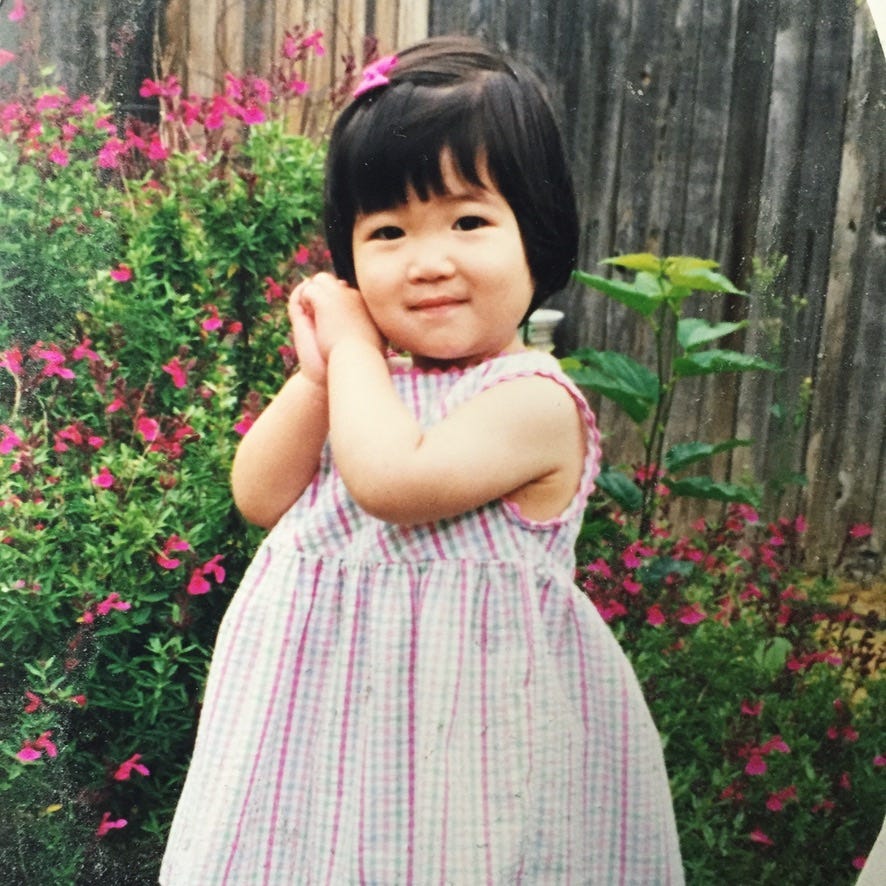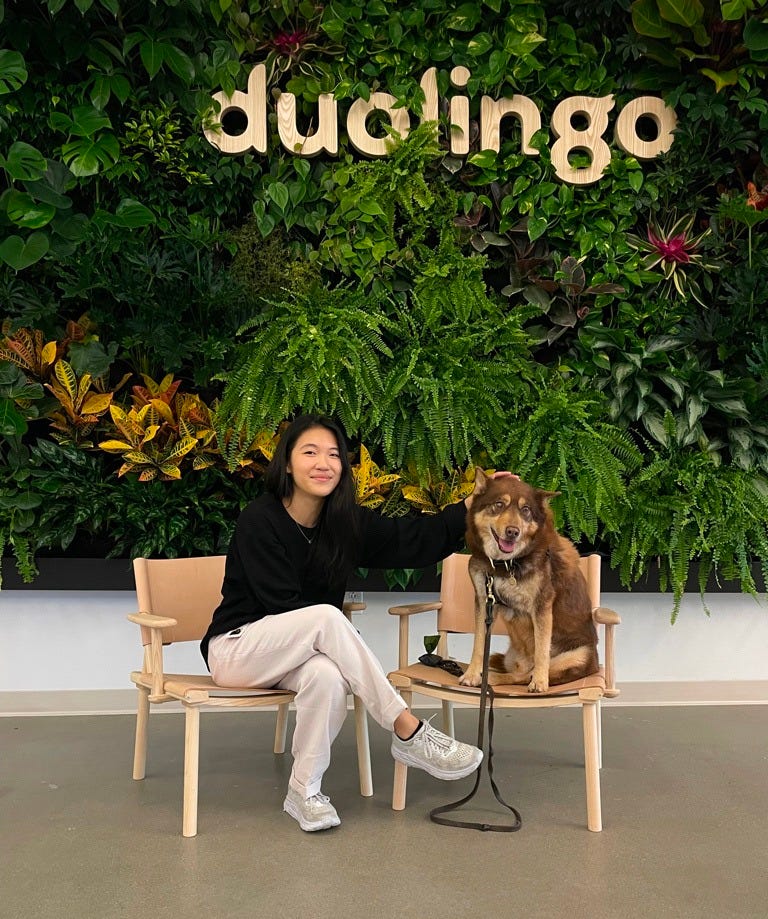I’ve been thinking a lot about the way I write. However, I’ve been having trouble finding the right words. This is ironic, because if you were to ask me what I do for a living, I’d tell you that it involves just that: finding the right words to say.
I fell into the world of User Experience (UX) Writing - also known as several other names, like Content Design, Content Strategy, UX Copywriting, or most recently, Product Writing - during my last semester of college in 2019. I joined a fintech company as a full-time Content Designer, becoming a part of their New User Experience Writers Initiative (NUWIs), which was an effort to recruit young blood into the Content Design world.
For those unfamiliar with Content Design - think about your favorite store. There’s an ideal path you want to take when you go there to shop for something specific. If you need help, there are signs to guide you, and there are workers sprinkled throughout aisles who you might stumble upon and ask questions. The best case is you complete the path - you find what you’re looking for, and you check out. Another case may be that you go in, get confused, can’t find what you’re looking for, get overwhelmed, and leave.
These types of paths, or user experiences, happen all the time within mobile apps we use for everyday tasks. Whether it’s Instagram, TikTok, or even Substack right in front of you - UX Writers, Content Designers, Content Strategists, and Product Writers all have the goal of working with cross-functional team members to make these ‘paths’ as easy-to-understand, accessible, and compelling for you as possible. Because, when these paths make your life easier, you’ll keep coming back, and that’s good for business (and technically, good for you too). Most companies will hide this objective behind a mission statement (I’d know, because I’ve written many myself); we all know the truth, though.
These are all things I had to learn on the go when being hired as a young, full-time Content Designer. The downside of 1) being young blood, and 2) falling into a writing job in tech is: I subconsciously squashed the goofy, creative writer I was before I started working; and it’s something (or someone, I should say) I’m currently unsure how to reclaim. Is there a writer to reclaim? Can you reclaim a writer when she’s been spiritually squashed like raw salmon Gordon Ramsay pounds with his bare fists?
Being one of the youngest recruits on the Content Design team at the time worked counterproductively. It gave me crippling imposter syndrome - like, both legs cut off, can’t even walk and hold myself up, knot in stomach, type of anxiety. It was, apparently, unheard of for someone to get a full-time position without being vetted through an internship first - much less, have someone who’s still a student make it through. But, that’s exactly what I did, and I wondered for a long time…how did I make it through? The answer is that I interviewed like everyone else, and then I received an offer.
That was the first question, though, that I was always asked by co-workers, “Woah…So-so wait, help me understand - you haven’t graduated yet, but you’re already working full-time? And you didn’t intern? How did that happen?”
It was a natural question, but the more I was asked this, the more interrogated I felt, and the bigger my existential crisis began to grow. How did that happen? The implication everyone was secretly saying under their breath was that I must have been good enough to jump through a lot of hoops into a role that some people honestly wait years for. Instead of being grateful for the opportunity, and thinking, Yes, I deserve to be here!, I spent too much time feeling worried about being ‘found out’ at any moment. I felt like I had to prove to my older peers that I was good - and that I would only continue to wow and amaze them from here on out. Of course, the pressure of being incredible at UX writing, which I had no initial experience in, was debilitating.
I began to distrust myself. This all went to my head, and eventually my pen (or keyboard). I remember expressing to my manager at the time, UX Writing is so hard. If this content were an essay, I think I’d know exactly how to re-structure it, and quickly jot out several paragraphs. But, with one sentence, I’m lost. Eventually, I learned through my peers how to be strategic, come up with different variations, and lean on feedback from my team.
Overall, a combination of adjusting to the corporate world, losing a bit more faith than expected in myself, and feeling completely lost started to make me lose direction in my own writing.
For context, I went from easily writing (potentially pretentious) stuff like this in 2017:
Joan Didion Print vs. Digital Article Comparison
From the autumn of the Era of Print to the spring-like dawn of the Digital Age, Joan Didion’s writing prowess has rolled with the seasons; she has fallen with leaves in crimson, and she has risen with miraculous bloom. While the 1972 print publication of “The Women’s Movement” from The New York Times and the 2011 digital piece “In Sable and Dark Glasses” from Vogue both smolder with Didion’s resilient voice and eagle-eyed perspective, they bear considerable similarities and differences in their written content, context, style, and medium.
To writing concise stuff like this, on the daily, in 2019:
Now, we can send payments you receive to your linked bank.
You’d be amazed at all the different versions you can play around with.
You’ll receive payments in your bank account. Link a bank so you can receive payments. Your payments will be sent to your linked bank. Your linked bank is all set up. Now, your linked bank can receive payments. Get payments sent to your linked bank.
The 2017 and 2019 writers are different, yet they’re both driven by specific purposes and goals. When I look back on passionate essays I used to crank out in high school and college, I often feel bittersweet, grieving the unstoppable energy Younger & Angstier Me used to have in order to milk every emotion and every literary device out of every word I could. Nowadays, it turns out, I actually don’t mind leaning into the revenue-friendly charm of clean, concise, and compelling copy styles that show up in the tech world.
But… I do mind a little. I don’t believe one style is necessarily better than other, since they’re allocated to different contexts and roles. However, I do question how to more readily access the artistic writer in me.
I’ve had English classes in the past where teachers used to sincerely express their admiration of not only my writing, but my ideas, which encouraged me to dig even deeper and write more - write better. A rhetorical digital publishing professor I had once wrote a note on that particular Joan Didion essay of mine (the 2017 excerpt above) that I’ll never forget, beginning her feedback with: “Damn… that was beautiful.”
In the workplace, you don’t get Damn… that was beautiful. You get, Let’s run this by Legal, or, Let’s see if XYZ director approves. And if you do get emotional reactions, you’ll probably get, I do not like this. You also get, Come on, give me something to work with here. Occasionally, I’ve gotten, You hit it out of the ball park. But most often, I’ll get, I hope you don’t mind - I took my own stab at the copy.
You start to lose your footing a bit, and you’re just trying to make it through the day, and get things reviewed, approved, and rejected, and then reviewed, approved, and launched. It’s just an endless conveyor belt of I Love Lucy chocolate writing, re-writing, and shoving chocolate into every orifice.
The truth is, and has always been, it doesn’t truly matter how beautiful or chocolate-y something is in the business world, unless it sells *takes a long, theatrical, drag of an invisible cigar - film noir.*
Perhaps what I’m getting at is just the same old trope where artistic people struggle to detach themselves from their work at some point.
My dad (who recently closed a chapter on his 22-year career at a lens wear company as a graphic designer and creative marketing services director), recently shared some relevant advice with me:
Scene: My parents and I are having breakfast in the morning together, and I’m picking at my dad’s brain for design advice.
Me: Dad, what’s something you know about design now, that you wish you’d known when you were first starting out?
Dad: You may think you have the best idea. But, you know, in school…. they try to lead you through these critiques, which is critical feedback, which is to improve an idea. And critical feedback is crucial to help gain a better solution.
It’s not meant as a personal attack - although when you’re first starting out, you take it that way. It’s a process to help identify what your blindspots are when you’re trying to arrive at a solution.
So, it’s being able to separate yourself from… instead of that protection of, This is the best idea ever (and you can’t really improve on it)… rather, here’s an idea, tell me what’s wrong with it, how I can make it better. That process of being open to receiving that feedback is something you have to learn to accept.
And then the other thing I think about - is at the game company {I worked at}, Bob Davis always taught us, Remember, as a designer, you are a hired gun. You are hired to solve a problem, in a specified time, for a price. Those are the three legs to working efficiently as a designer.
Me: A hired gun?
Dad laughs.
Mom: Like an assassin…
More laughter.
Mom: Well basically, it’s - you do the job, you have no questions, you just do it. Right?
Me: So, as if I’m held at gunpoint?
Dad: Or you could describe it as being a butcher, right? You have a piece of meat that comes across the chopping block - TSCHH! - cut it, and you move on.
Me: Why does that sound so… ?
Dad: Well, you get tripped up - it’s like, your piece of meat comes across, and you’re like, Oh, it’s so beautiful, I don’t want to touch it, you know… and then you get it all out of shape…
Me: Okay, so you’re an executor. Like, you execute things - design.
Mom corrects my pronunciation of executor.
So, I’m remembering that I can just be a butcher and pay the bills.

In a dramatic, jaded, and long-winded way - am I saying that my creative spirit has died a little? Yes, very much - it’s a tale as old as time. Have I also undergone uncomfortable growth that I’ve learned to appreciate in the end? Yes, of course - another tale as old as time. And yes, I know uncomfortable growth counts as creativity too.
Eventually, after my fintech era, I did move onto Content Design at an edtech company (think: green owl obsessed with Dua Lipa), where creativity and pushing the envelope happens all the time. There, I especially felt inspired to put on more offbeat hats and lean into ideas that maybe wouldn’t fly in the fintech world.
However, writing in a more fast-paced, creative environment has its own challenges - because of how short and delightful the words needed to be for learners, how fast we needed to churn them out, and how green the Content Design organization was there. It was challenging (in a fun way) going from writing about receiving and sending payments, to guilt-tripping learners into doing a Spanish lesson. Finding a new rhythm, and where your tune belongs, is always tough.
Once, a leader sent out a company-wide email begging product managers to stop bringing designs for him to review with loads of copy. Now, I’m not sure if these specific examples were written by the actual Content team (remember how I said this - I hope you don’t mind. I took a stab at the copy - would happen a lot?), but the effect still stung all the same. He included this sentence in that quickly, typed-from-iPhone, company-wide message, “People don’t read.” So, in other words, make it snappy, y’all.
That kind of hurt our little writing-nerd hearts (it hurt mine). But, from a certain light, he was right. In product experiences, and I suppose, in general - people only want to read what they’re looking for. That’s how we make user experiences, and dare I say, life, more accessible and meaningful for them. The world is an oyster - some just want to get straight to the gooey part.
But, begging for shorter copy comes with its own conditions. Shorter may be sweeter, but it takes longer, which is something most people overlook or don’t bother to undersatnd. Mark Twain said it best himself:
“I didn't have time to write a short letter, so I wrote a long one instead.”
You and I both know a big part of the writing process happens off the page - figuring out what not to say, drafting and re-drafting that draft, reading and editing in your head, letting ideas circulate in the air above your head like a flock of migrating birds before they land somewhere - the list goes on. And all of that, just for a sentence or two? Three? Yes - it may be all of that for a sentence or two, or three, or it could be all of that just to realize you don’t even need those sentences in the first place.
That’s why it’s always been funny to me when people ask me to wordsmith something on the fly, like they’re ordering fast food.
I believe writing can, and should, be a guilty pleasure that you can drink up late at night; yet, at the same time, I believe it deserves to be carefully sculpted and preserved over several lifetimes, like a fossil. I also believe writing can, indeed, be magic, like something that you conjure up out of thin air. It can be a feeling or sunset-like beauty that you can only experience or see with your eyes.
But, good writing takes time. And good writing is something that’s personal to everyone. People read what they want to read, just like people write what they want to write. The path to good writing looks different for everyone.
For me, I think writing just continues to be awe-inspiring because of all the different forms it takes, how it just absorbs molecules from every unique writer’s experiences and emotional fiber. I’ve been energized by the fact that style bursts from authenticity, and all that anyone really needs to do is be their authentic self. Groundbreaking, I know - but being yourself, and finding your style, seems to be one of life’s mysteries that we don’t quite ever figure out until the end.
Having been on the job hunt (read: sweating through several rounds of UX Writer interviews) over the past year - I can feel the writer in me seesaw back and forth between wanting to be a butcher and wanting to be an authentic artist. And just wanting to be rich. 🤑
Being all these different things are creative and fulfilling in their own ways, but they can also be unforgiving. With such an unforgiving career break, I’m glad to have this time to go off into the wilderness and explore, and then share what I find with you whenever I get back.









